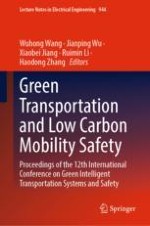2023 | OriginalPaper | Buchkapitel
Classification of Driving Tendency of Commercial Truck Drivers Based on AdaBoost Algorithm
verfasst von : Zhaofei Wang, Qiuping Wang, Shiqing Wang, Jianfeng Xi, Jian Tian
Erschienen in: Green Transportation and Low Carbon Mobility Safety
Verlag: Springer Nature Singapore
Aktivieren Sie unsere intelligente Suche, um passende Fachinhalte oder Patente zu finden.
Wählen Sie Textabschnitte aus um mit Künstlicher Intelligenz passenden Patente zu finden. powered by
Markieren Sie Textabschnitte, um KI-gestützt weitere passende Inhalte zu finden. powered by
